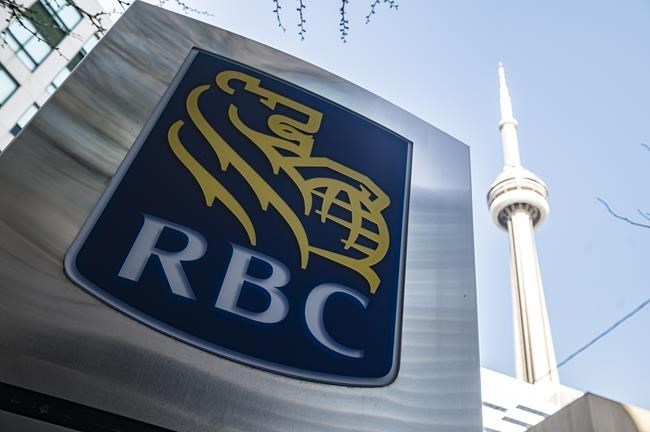TORONTO — Royal Bank of Canada reported higher earnings Thursday as it said many underlying economic indicators remain strong despite the heightened risk of a recession.
"We're trying to present a balanced view of the economy right now and that we're mid-cycle," said chief executive Dave McKay on an earnings call.
He said, however, that Russia's invasion of Ukraine has added complexity to challenges like supply chain disruptions, and shortages in energy, labour and housing that are contributing to inflation and flashing potential late-cycle signals.
Central banks have to hit demand "really hard" to contain inflation, said McKay, making it difficult to predict how higher rates and inflation will impact demand and the lack of goods and services to meet that demand.
"From that perspective, markets are struggling to predict how we land the economy, do we land it with a slight recession? And our message today is, it could go either way, it's 50-50."
Strong underlying tenants in the economy, such as liquidity and full employment, should however act as good shock absorbers to that uncertainty, he said.
For now the bank is still seeing a boost from lower pandemic-related worries as it reported a $342 million reversal of provisions for credit losses, compared with a reversal of $96 million in the same quarter last year.
The provisions included a $504 million reversal on performing loans as a wind-down in pandemic-related provisions, offset by a $174 million in new provisions on impaired loans related to new uncertainties, said chief risk officer Graeme Hepworth.
"While our base case still call for positive economic growth, we have increased both the severity and likelihood of our downside scenarios, which has partially offset the COVID-19-related reserve release."
He said the employment rates, housing prices and other macroeconomic variables came in stronger than projected in the second quarter and that a return to normal credit loss provision levels has likely been pushed back later in 2023, while any elevated credit costs associated with these emerging macroeconomic headwinds are not likely to materialize until 2024.
The outlook came as the bank reported revenues of $11.22 billion for the second quarter, down three per cent from a year ago, while its net income of $4.25 billion was up six per cent from a year earlier.
Revenues were down largely from its capital markets division from the unfavourable market conditions, while profitablilty was boosted in part by the credit loss reversal.
The bank reported its second-quarter net income rose to $4.25 billion compared with $4.02 billion in the same quarter last year as it said it would now pay a quarterly dividend of $1.28 per share, up from $1.20 per share.
On an adjusted basis, RBC said it earned $2.99 per diluted share, up from an adjusted profit of $2.79 per diluted share a year ago.
Analysts on average had expected an adjusted profit of $2.67 per share, according to estimates compiled by financial markets data firm Refinitiv.
"On the face of it Royal Bank delivered an impressive 12 per cent beat to the Street on core EPS, but peel away a very large pandemic-related reserve releases of $504M (or $516M including other financial assets) and a favourable tax item and results come back to earth very quickly," said Scotiabank analyst Meny Grauman in a note.
He said there were still positives, including an impressive margin expansion and a nine per cent overall loan growth.
RBC recorded 11 per cent growth in residential mortgages in Canadain Banking, but expects the market to slow on rising rates.
McKay said he expects the slowing mortgage market to be offset by higher growth in commercial lending and credit cards as spending and card balances rise.
"Credit and debit card transactions were 30 per cent above pre-COVID levels in April with strong momentum carrying into May," he said.
The bank said also noted that investor mortgages account for 13 per cent of its Canadian banking and residential mortgage portfolio, for which it applies more stringent underwriting standards.
This report by The Canadian Press was first published May 26, 2022.
Companies in this story: (TSX:RY)
The Canadian Press



